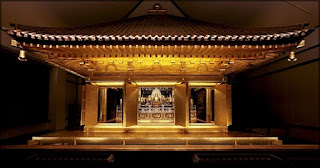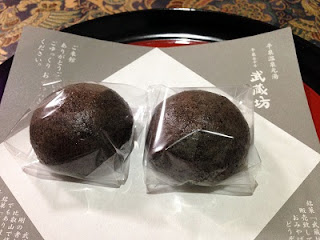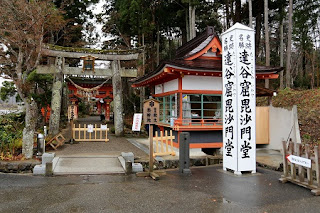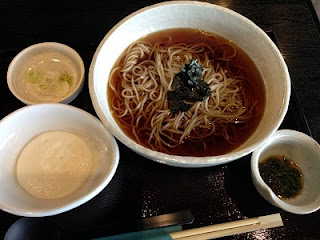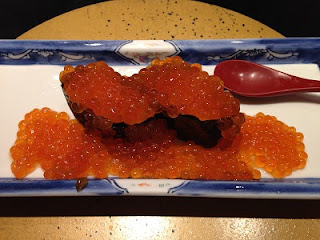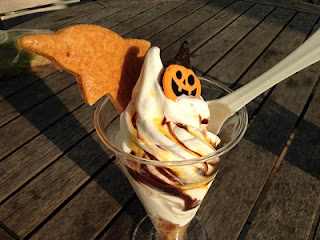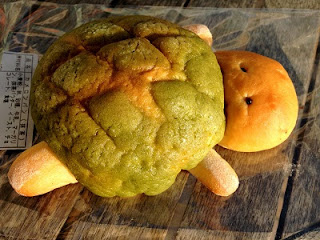Chusonji
中尊寺
Chūson-ji is situated on the top of a hill named Kanzan, and often called Kanzan Chūson-ji. According to temple records, it was founded in 850 by Ennin (Jikaku Daishi), a monk associated with the great monastery Enryakuji and third head abbot of the Tendai sect. Ennin is also known for the autobiographical record of his travels and study of Buddhism on the continent, regarded by some as one of the world's greatest travelogues.
It was in the early twelfth century that the first Ōshū Fujiwara lord, Kiyohira, began the construction of a massive temple complex of halls and pagodas here. According to the Azuma kagami (the official history of the Kamakura shogunate) there were more than 40 halls and pagodas, and over 300 monks' residences.
Kiyohira intended that Chūson-ji would placate the spirits of those who had died, either friend or foe, in the bitter conflicts that had dominated Tohoku in the latter half of the late eleventh century. He further wished to create a peaceful state based on the principles of Buddhism. (source)
中尊寺は嘉祥3年(850)、比叡山延暦寺の高僧慈覚大師円仁(じかくだいしえんにん)によって開かれました。その後、12世紀のはじめに奥州藤原氏初代清衡公によって大規模な堂塔の造営が行われました。清衡公の中尊寺建立の趣旨は、11世紀後半に東北地方で続いた戦乱(前九年・後三年合戦)で亡くなった生きとし生けるものの霊を敵味方の別なく慰め、「みちのく」といわれ辺境とされた東北地方に、仏国土(仏の教えによる平和な理想社会)を建設する、というものでした。それは戦乱で父や妻子を失い、骨肉の争いを余儀なくされた清衡公の非戦の決意でもありました。
There is Konjikidō in the house.
金色堂
Google map
Konjikidō ; golden Amida hall
金色堂
Ennin (Jikaku Daishi)
慈覚大師円仁
Completed in 1124, Konjikidō is the only building left which conveys to us an image of the initial establishment of Chūson-ji. This golden Amida hall is covered with gold leaf on both the interior and exterior. The ornamentation inside the temple is outstanding. The four pillars, the Buddhist altars and the tie-beams are all decorated with lustrous white shell inlays, engraved metal fittings and gold-sprinkled lacquer. The entire temple is one work of art that brings together the most sophisticated artistic techniques of the late Heian era.
Chusonji
Main Gate
中尊寺 正門
About Chusonji
Google map
Main Hall
本堂
Shaka Nyorai (Historical Buddha)
釈迦如来
Benkeido Hall
弁慶堂
Google map
Musashibo Benkei(Lt) MINAMOTO no Yoshitsune(Rt)
武蔵坊弁慶(左) 源義経(右)
Hiraizumi station
平泉駅
Japanese foods are good and safe.
Because of stricter food safety law by Japanese government, we have no worry about foods.
Oyster
かき
Oyster
かき
Zenzai ; red bean soup and baked mochi
ぜんざい
Manju ; bun with bean‐jam filling
まんじゅう
Kaiseki ryori ; set of dishes served on an individual tray for entertaining guests
会席料理
About 5 years have passed since Fukushima Daiichi nuclear power plant accident. I have visited various places of Japan to see the health consequence of the accident.
Fortunately I have never found any impacts by the accident among Japanese creatures. As far as I know, nobody has health problem which is caused by the nuclear power plant accident in Japan.
Our Prime Minister Abe assures that "The situation is under control. The influence of the contaminated water is completely blocked within Fukushima. There are no health-related problems until now and there will never be health problems." He also said that "Tokyo is 250 kilometers away from Fukushima, and the kind of danger that you imagine does not exist in Tokyo. Tokyo is a very safe city."
As PM Abe said, Iwate prefecture is very far away from Fukushima, people in there have no concern about the nuclear power plant accident. People in Iwate have already forgotten the accident, because they think radioactive materials cannot reach there.
We know there is no problem for childbirth and child rearing in Iwate. So people in Iwate are living without any concern about the accident.
I continue to visit various places in Japan to see the effects of the nuclear power plant accident, because I can meet various creatures which are more sensitive to radioactive materials from the environment. It is important to see their health for our safety.
公衆衛生ネットワーク
Public Health Network in Japan

